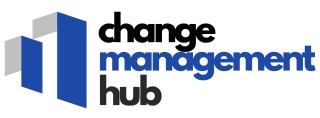-large-teaser.webp)
Understanding the Role of a Project Requirements Document
Significance and Purpose in Project Management
In the realm of project management, creating a project requirements document is a pivotal process. Such a document lays the groundwork for all ensuing actions within a project, dictating the direction and scope of the team's work. As projects often involve diverse teams, including development and business stakeholders, a clear, concise, and thoroughly drafted requirements document is indispensable. A well-crafted document serves as a vital communication tool, bridging gaps between stakeholders and ensuring all parties are aligned in their understanding of the project's scope. It provides a steadfast reference point for teams, aiding in the prevention of scope creep and misunderstandings.Facilitating Effective Communication and Understanding
The documentation of user stories, functional requirements, and technical specifications within a requirements document translates complex ideas into understandable terms for all involved. This translation is particularly crucial in agile environments where project requirements may evolve, necessitating adaptability and clear communication among all teams.Foundation for Successful Execution
Beyond facilitating communication, the document is instrumental in managing expectations and synchronizing efforts across different departments and teams. It lays the foundation for effective product management by clearly defining what the end product should entail, ensuring alignment on the project's objectives from the outset. The importance of thorough documentation in the project's initial phases cannot be overstated. It's a process that involves gathering input from various stakeholders and translating this input into coherent requirements that guide the project to successful completion.Key Components of a Project Requirements Document
Essential Elements of a Project Requirements Document
Creating a comprehensive project requirements document is crucial for effective project management. This document serves as a roadmap for the development team, ensuring that all stakeholders are aligned with the project's goals and objectives. Here are the key components that should be included:
- Project Scope: Clearly define the boundaries of the project. This includes what the project will deliver and what it will not. A well-defined scope helps in managing stakeholder expectations and prevents scope creep.
- Functional Requirements: These are the specific functionalities that the product or software must have. They should be detailed enough for the development team to understand what needs to be built.
- User Stories: In agile environments, user stories are used to capture stakeholder requirements. They describe how different types of users will interact with the product, providing a user-centric view of the requirements.
- Stakeholder Requirements: Documenting stakeholder needs is essential for ensuring that the project meets business objectives. This involves gathering input from all relevant parties and integrating their feedback into the project plan.
- Requirements Gathering Process: Outline the methods and tools used for gathering requirements. This could include interviews, surveys, workshops, or management tools that facilitate collaboration among teams.
- Privacy Policy: If the project involves handling sensitive data, include a section on how privacy and data protection will be managed.
Documenting project requirements effectively is a critical step in the requirements management process. By including these elements, teams can create a robust document that guides the project from inception to completion. For more insights on crafting an effective channel strategy for change management, visit this resource.
Common Challenges in Drafting Project Requirements
Overcoming Obstacles in Requirement Documentation
Drafting project requirements documents is not without its challenges. These documents are essential in effective project management, yet they often encounter obstacles that can hinder their development and use.- Ambiguous Language: One common issue is the use of vague or unclear language, which can lead to misunderstandings among team members and stakeholders. To avoid this, it's crucial to use precise terminology and include a glossary of terms if needed.
- Lack of Stakeholder Involvement: Ensuring that all relevant stakeholders are involved in the requirements gathering process is vital. When stakeholders are not engaged, the resulting document may not fully capture the necessary user and business requirements. This can result in project scope changes and increased costs.
- Changing Requirements: Projects, especially those following an agile methodology, often experience evolving requirements. This can complicate the requirements management process, as the document must stay current and reflective of the project's direction. Establishing a clear change management plan helps to adapt to these changes efficiently.
- Insufficient Documentation: Lack of comprehensive documentation can lead to assumptions and errors during the development phase. It's essential to ensure that all functional and non-functional requirements are thoroughly documented.
- Inadequate Tools: Using the right tools for documenting and managing requirements can be a game-changer. Leveraging management tools helps in organizing and updating requirements as they change over the course of the project.
Best Practices for Effective Documentation
Effective Strategies for Compelling Project Documentation
Creating compelling project documents is an essential part of project management and product development. To ensure the success of a project, it is crucial to follow best practices that align documentation efforts with the needs and expectations of all stakeholders involved. One of the primary principles of effective documentation is to maintain clarity and simplicity. Clear requirements help bridge the communication gap between the project team and stakeholders, making the project’s objectives and scope easily understandable. Bullet point lists can enhance readability by breaking down complex information into more digestible parts. Here are some best practices that can be applied:- Engage Stakeholders Early: Effective project documentation involves early engagement with all stakeholders. This ensures their requirements and expectations are gathered accurately during the initial stages of the project.
- Use Collaborative Tools: Implementing collaborative tools can streamline the process of gathering and maintaining requirements, allowing for real-time updates and feedback from all members of the team.
- Define Clear Project Scope: A clearly defined project scope helps avoid scope creep, preventing additional features from being added without consideration of the project's timeline and resources.
- Incorporate User Stories: Making use of user stories can help focus the documentation on addressing user needs and experiences, especially within agile environments.
Tools and Techniques for Gathering Requirements
Tools and Techniques to Secure Effective Requirements Gathering
In the realm of change management and project planning, tools and techniques play a critical role in facilitating effective requirements gathering. This process is fundamental to crafting a clear and concise requirements document.
- Interactive Workshops: Engaging stakeholders and the development team in interactive workshops can help in uncovering comprehensive user stories. This enhances the collaborative process and ensures all functional requirements are documented.
- Requirement Management Software: Utilizing management tools specifically designed for requirements project can streamline the documentation process. These tools help in managing project scope, tracking changes, and maintaining an organized record of all stakeholder requirements.
- User Story Mapping: This technique involves visually plotting out functional requirements. Creating a map of user stories helps the product management team align on product requirements with clear visibility.
- Prototyping: Building prototypes provides an opportunity for stakeholders and the development team to engage in hands-on exploration. This method yields feedback that can refine the document requirements before finalization.
- Questionnaires and Surveys: Garnering insights through structured surveys allows a broad understanding of stakeholder needs. It is especially useful in agile environments where ongoing feedback is crucial.
Different types of requirements call for varied approaches in gathering and documenting project needs. It's essential to adopt tailored techniques that align with your project management style. This way, the project team can produce robust documentation that informs the entire project life cycle.













